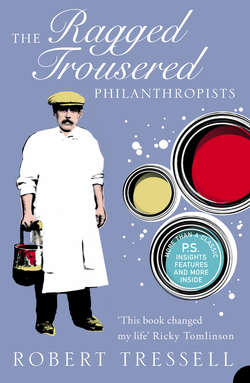Читать книгу The Ragged Trousered Philanthropists - Robert Tressell - Страница 9
The Ragged Trousered Philanthropists and the English Novel Tradition
ОглавлениеJack Mitchell has situated The Ragged Trousered Philanthropists within the English novel tradition.10 One characteristic of that tradition is to see society as a whole, as a community, and another is to resolve whatever prevents that community from being realised. Both these inform the ‘condition of England’ novels of the nineteenth century of which Tressell’s is perhaps the last.
Mitchell traces Tressell’s line of descent from John Bunyan through, among others, Jonathan Swift, Daniel Defoe, Henry Fielding and Charles Dickens. Tressell himself said that he read Fielding and Dickens while he was writing The Ragged Trousered Philanthropists but it is the influence of Dickens which is most evident in the book, particularly in the way the reader’s attention is directed to the sufferings of children: how their bodies are deformed, how their minds are stultified and their sensibilities brutalised. But the children in the novel are not just victims, they also represent hope for the future: they disregard the class distinctions (pp. 77-8) and, in contrast to the selfishness which the system demands, they show themselves willing to share (p. 136).
In addition to signifying the contradictory qualities of pathos and optimism the term ‘children’ is frequently used of the philanthropists. This brings into relief the latent paternalism in the novel, present in such gestures as Barrington’s gift of £10 to the Owens. Here again Tressell shows his indebtedness to Dickens whose kind hearted capitalists, such as the Cheeryble brothers in Nicholas Nickleby, implied that the system did not need to be fundamentally changed.
Tressell’s novel can also be seen as belonging to the tradition of working class writing. The standard working class novel of the nineteenth century such as Thomas Martin Wheeler’s Sunshine and Shadows (1849) or H. J. Bramsbury’s A Working Class Tragedy (1895), was highly partisan but ‘failed to get inside working class life’ because it relied on the formula of the romance, mystery or adventure novel.11 Tressell was able to overcome this limitation by recourse to the techniques of the realistic novel, those techniques themselves being modified by the commitment to socialism. Hence, unlike the bourgeois novel, The Ragged Trousered Philanthropists is more interested in the fate of the community than just the individual.
